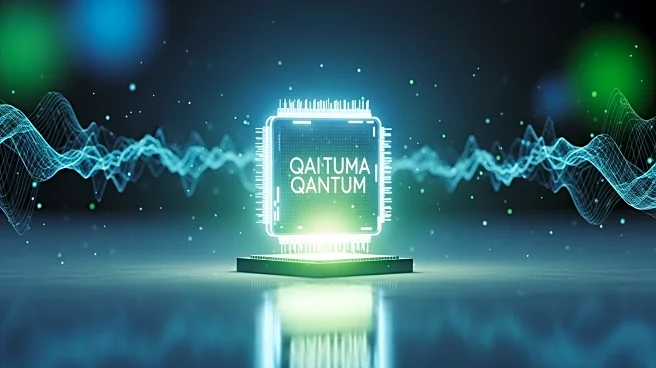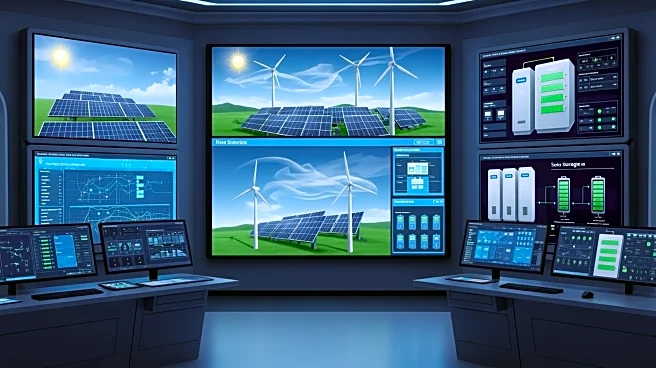What's Happening?
The United States has announced a significant advancement in renewable energy technology through a quantum breakthrough that addresses the intermittency issue of solar and wind power. This development
involves a thermal energy storage (TES) system paired with a thermophotovoltaic (TPV) converter, which efficiently converts stored heat into electricity. The system captures heat, stores it, and then emits photons that are harvested by solar-like cells, allowing for a continuous renewable energy supply. This innovation promises to improve the reliability of clean energy by providing a consistent power source, even when sunlight and wind are not available.
Why It's Important?
This breakthrough is crucial as it tackles one of the major challenges of renewable energy: its intermittent nature. By providing a reliable storage solution, the technology could reduce the need for fossil fuel backup and expensive battery systems, making renewable energy more viable and cost-effective. The potential to store and dispatch power efficiently could lead to a more stable energy grid, benefiting both households and industries. Additionally, this advancement could decrease reliance on scarce minerals used in conventional batteries, promoting a more sustainable and resilient energy infrastructure.
What's Next?
The next steps involve scaling up the technology and testing its durability in real-world conditions. Researchers will focus on developing integrated prototypes and conducting grid-level pilots to assess the system's performance and economic viability. Key areas of development include enhancing the thermal stability of emitters, optimizing photovoltaic cells for TPV spectra, and ensuring the system's long-term reliability. Successful implementation could revolutionize how utilities manage peak demand and integrate renewable energy sources into the grid.
Beyond the Headlines
The quantum engineering of light in this breakthrough represents a significant leap in energy technology, potentially transforming the landscape of renewable energy. By enabling more precise control over photon emission, the technology not only improves efficiency but also reduces environmental impact. This could lead to a shift in energy policy and investment, as utilities and governments recognize the benefits of a more predictable and sustainable energy supply.











